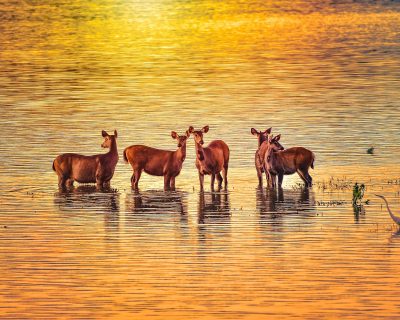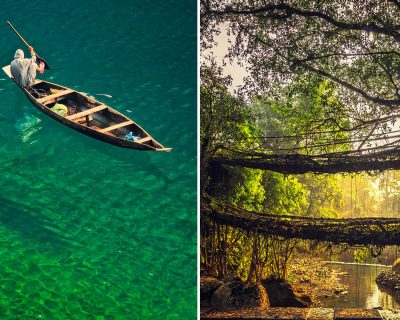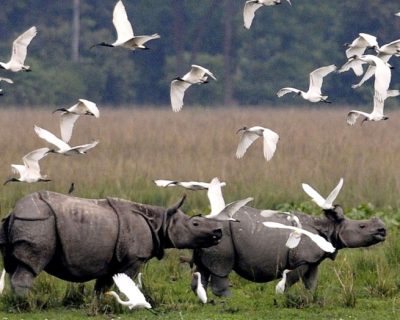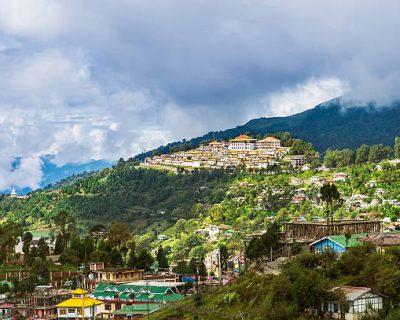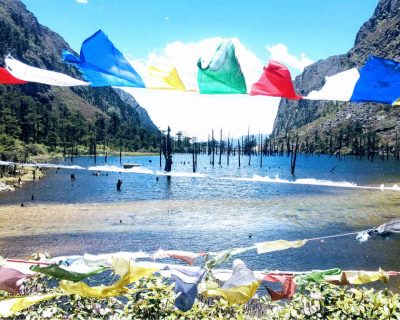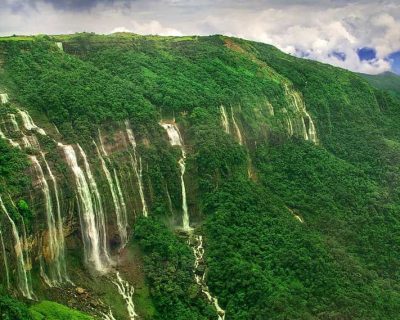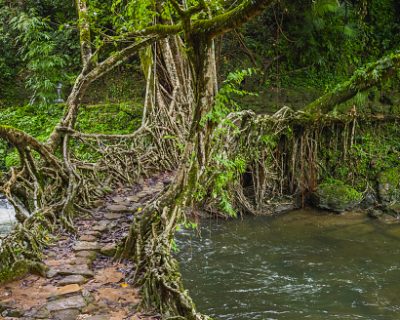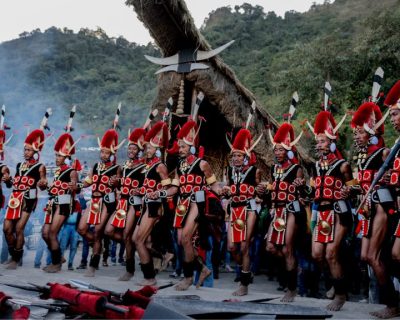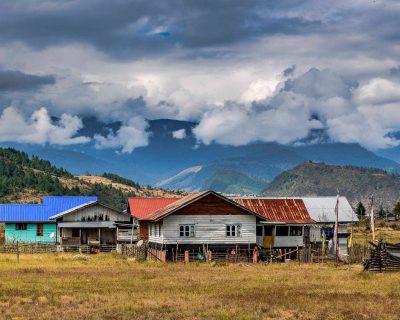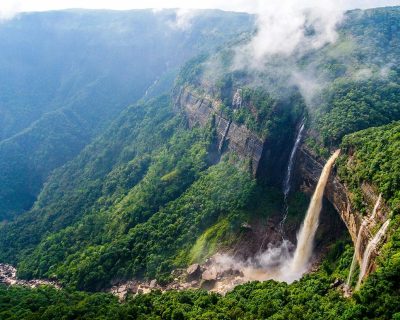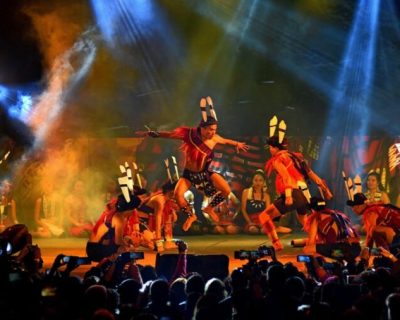Discover North East India
north east India tour packages
Northeast India is the easternmost region of India representing both a geographic and political administrative division of the country. It comprises eight states – Arunachal Pradesh, Assam, Manipur, Meghalaya, Mizoram, Nagaland, Sikkim and Tripura. The region shares an international border with several neighboring countries – with Tibet Autonomous Region, China in the north, with Myanmar in the east, with Bangladesh in the south-west, with Nepal in the west, with Bhutan in the north-west.
The Northeast region can be physiographically categorized into the Eastern Himalaya, the Patkai Range, the Brahmaputra and the Barak valley plains. Northeast India (at the confluence of Indo-Malayan, Indo-Chinese, and Indian biogeographical realms) has a predominantly humid sub-tropical climate with hot, humid summers, severe monsoons, and mild winters. Along with the west coast of India, this region has some of the Indian subcontinent’s last remaining rainforests, which support diverse flora and fauna and several crop species. Reserves of petroleum and natural gas in the region are estimated to constitute a fifth of India’s total potential.
The region is covered by the mighty Brahmaputra-Barak river systems and their tributaries. Geographically, apart from the Brahmaputra, Barak and Imphal valleys and some flatlands in between the hills of Meghalaya and Tripura, the remaining two-thirds of the area is hilly terrain interspersed with valleys and plains; the altitude varies from almost sea-level to over 7,000 meters (23,000ft) above MSL. The region’s high rainfall, averaging around 10,000 millimetre (390 in) and above creates problems of the ecosystem, high seismic activity, and floods. The states of Arunachal Pradesh and Sikkim have a montane climate with cold, snowy winters and mild summers.
This area of the country is different demographically from the rest of India, which is partly shown by the nature of its religious diversity. While the great majority of Tripurans are Hindus and most Assamese are Hindus or Muslims, Mizoram, Meghalaya and Nagaland are overwhelmingly Christian, Manipur is almost equally divided between Hindus and Christians, and Arunachal Pradesh has a very slight plurality of Christians, with Hindus in nearly equal numbers and the indigenous Donyi-Polo religion, which combines shamanism and Animism, close behind. There is also a Buddhist presence, especially in places like Tawang that are close to the borders of Tibet and Bhutan. Tibetan cultural influence extends far beyond the population of practicing Buddhists, for example by influencing local foods in some parts of the North East. Given the unique cultural and social landscape, it helps a visitor to avoid patronizing questions about race, citizenry, or even food. Remember, these are seven diverse states with highly diverse legacies.
Geographically, again, Assam is a state apart, as it is centered around the valley of the broad Brahmaputra, whereas all the other states in this region are at least partly hilly, with some featuring tall snow-capped mountains.
The main entry point for any north-eastern state is Assam, if one is entering from within India. There are entry points from Bangladesh (Dawki in Meghalaya) and Myanmar (Moreh in Manipur), but entry is restricted to local traders and government officials.
Foreigners need a Protected Area Permit (PAP) to enter the state of Arunachal Pradesh. Permits are issued by the Ministry of Home Affairs, but the easiest approach is to get your Indian visa with a special endorsement allowing travel in the state. Individual travelers are generally granted 15 days (extendable once), but are allowed access only into major towns and sights; travels off the beaten track generally require a registered tour group of four or more people.
Foreigners are required to register with the Foreigners Registration Office (FRO) within 24 hours of arriving in Manipur, Mizoram or Nagaland..
Indian citizens need an Inner Line Permit (ILP) to enter Arunachal Pradesh, Mizoram or Nagaland.
By plane
Assam (Gopinath Bordoloi Airport, Guwahati), Manipur (Imphal Airport), Nagaland (Dimapur Airport) and Tripura (Agartala Airport) have direct flights from other parts of India (Delhi and/or Kolkata). There are two other major airports serving upper regions of Assam and neighbouring areas – Dibrugarh Airport and Silchar Airport. There are helicopter services to Naharlagun (14 km from Itanagar, Arunachal Pradesh) and Aizawl (Mizoram).
By train
There are good train connections from most of the major Indian cities to Assam. Incidentally, Assam is the only state in region with rail lines (barring Nagaland with one station-Dimapur). The important stations in Assam are Guwahati, Bongaigaon, Lumding, Tinsukia and Dibrugarh. The fastest train from Delhi is Guwahati-bound Rajdhani Express (28 hrs) followed by North-East Express (32 hrs) and Dibrugarh-bound Brahmaputra Mail (42 hrs), while the fastest train from Kolkata (Howrah) is Saraighat Express. The train track in Assam is not electrified and is a single lane, so delays are the norm.
There are narrow gauge trains to Arunachal Pradesh and Barak Valley area but they are very much prone to cancellation and delays and are not at all comfortable.
Improving the rail connections in North East India is a priority for the Central Government of India, and rail extensions are under construction.
By road
All the states have good network of roads in urban areas. There are regular long journey buses from West Bengal to many north-eastern states. Self-driving is not a good idea as all roads pass through heavy forest reserves and areas infested by insurgents.
Eat
North East India is famous for its delicious and ethnic delicacies. The cuisine includes world famous vegetarian and non vegetarian dishes. North East has earned accolades for the various dishes prepared from local herbs and spices. Apart from local dishes, it is also equipped with restaurants and hotels serving conventional Indian foods (both North Indian and South Indian). So eating is no problem for tourists.
Drink
If you are over the age of 25, you can drink alcohol in India. In North Eastern India, there are many refreshing alcoholic beverages that you can drink. Look for aphung (a rice-beer) in Arunachal Pradesh and Assam, zutho (a type of wine) in Nagaland, or the mildly intoxicating tongba in Sikkim. You can find many of these in local markets.
Safety
In the past, the region gained a bad reputation due to separatism, tribal and sectarian violence, and militant activities. Since then, many of these activities have simmered down as many rebel groups have made peace with the Indian government, and the region is safe for travel.
In terms of personal safety, most travelers, including solo female travelers, will not face any major problems walking around the streets at night.
Driving in the North East is remarkably safer and reliable. Drivers will not impatiently honk at you and most visitors can expect to cross roads with ease.
Respect
The North-East has a plethora of distinctive languages and cultures that set it apart from the rest of India. Hospitality is a cornerstone of many of the cultures here, and many locals will go out of their way to make a visitor feel welcomed. For instance, it’s not uncommon for a local to help someone out if they’re in need of transportation or anything else. You may, however, be expected to give it back one way or the other.
The people from the North East are noted for having distinctive Asian looks. This has, on occasion, caused some North Easterners to be made fun of or discriminated in other parts of India, and many of the more well-aware Indians regard this as a pressing social issue. It’s best to avoid expressing shock at someone’s racial complexion as it is considered ignorant.
In some places, namely Mizoram, the Church and other religious institutions play an influential role in society. As such, it is considered good form to keep all negative sentiments about religious institutions to yourself.
While the region is no longer a hotbed for separatism these days, political and social issues do persist.
What is an Inner Line Permit?
Inner Line Permit (ILP) is an official travel document issued by the concerned state government to allow inward travel of an Indian citizen into a protected area for a limited period. It is obligatory for Indian citizens from outside those states to obtain a permit for entering into the protected state. The document is an effort by the government to regulate movement to certain areas located near the international border of India.
Foreign (International) Tourists
In a bid to boost tourism, the North East states of Manipur, Mizoram and Nagaland all scrapped the requirement for Foreign Visitors to apply for a Protected Area Permit (RAP, PAP) on the 1st Jan 2011.
So for travel to Nagaland, Assam, Meghalaya, Manipur, Mizoram and Tripura, permits are not required for foreign passport holders.
Arunachal Pradesh – Visitors still require permits.
Sikkim – Visitors still require permits.
This relief is not applicable to citizens of Pakistan and China who still require permits to visit Nagaland.
Foreign tourists will still need to register themselves at the nearest local Police station upon their arrival to Nagaland.
Domestic (Indian) Tourists
An Inner Line Permit (ILP) is required for Indian (Domestic) tourists entry into Nagaland, Arunachal Pradesh, Sikkim – Required to visit restricted places.
Exception: Citizens of Pakistan, Bangladesh, China and foreign nationals having their origin in these countries will require prior approval from the Ministry of Home affairs before entering the state.

